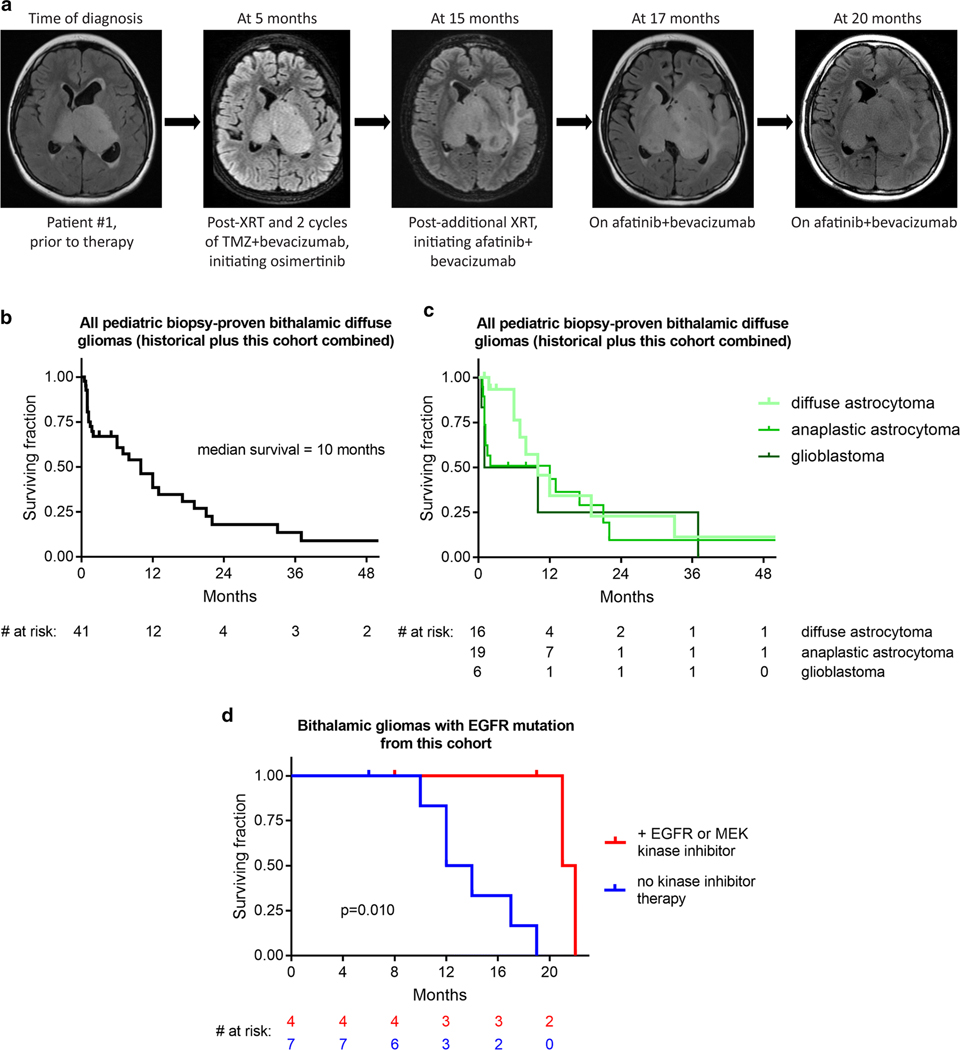Fig. 5.
Small molecule tyrosine kinase inhibition may extend survival for children with bithalamic gliomas. a, Imaging showing disease course for patient #1 whose therapy included both osimertinib and afatinib. Images are from axial T2/FLAIR sequences taken at different stages during treatment. b, Kaplan-Meier survival analysis of 41 children with bithalamic gliomas, including the 13 children from this study combined with all historical cases of biopsy-proven bithalamic diffuse gliomas reported in the literature (see Supplementary Table 11 [Online supplement 1]). c, Kaplan-Meier survival analysis of these 41 children with bithalamic gliomas stratified based on histologic classification as diffuse astrocytoma, anaplastic astrocytoma, or glioblastoma. d, Kaplan-Meier survival analysis of the 11 children with bithalamic gliomas harboring EGFR mutations from this study cohort stratified by those whose therapy included a small molecule EGFR or MEK kinase inhibitor (n=4) versus those children whose treatment did not include a small molecule tyrosine kinase inhibitor (n=7). p value was calculated by Log-rank (Mantel-Cox) test.

